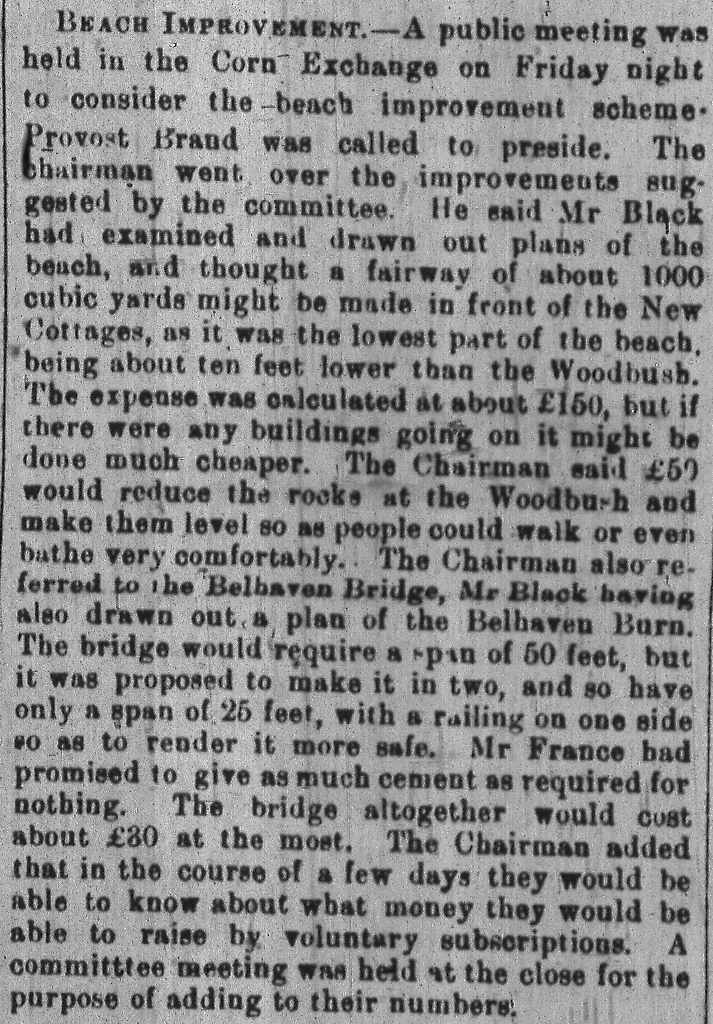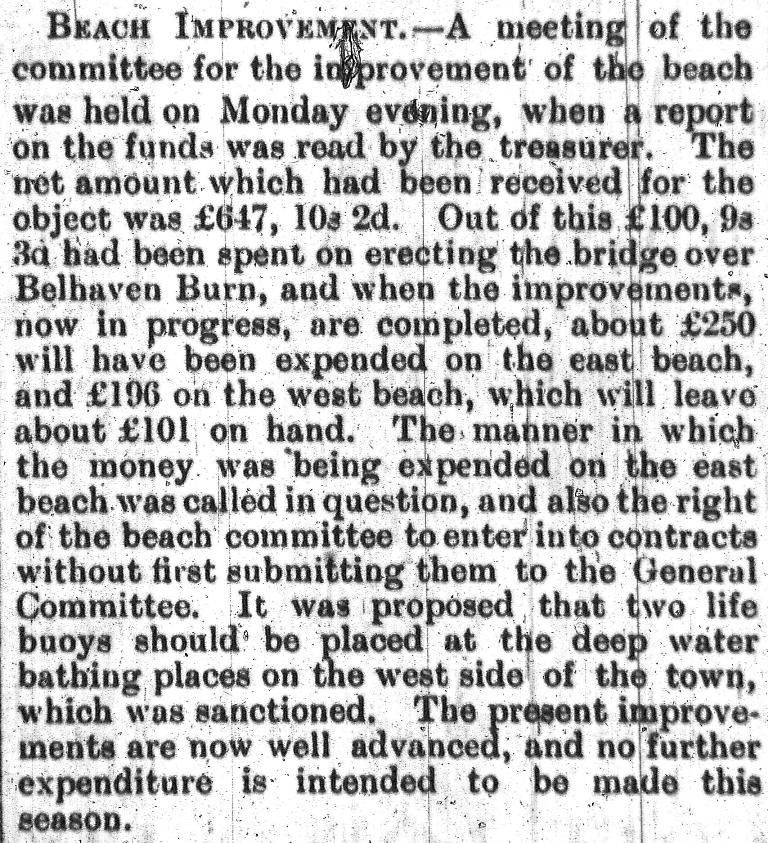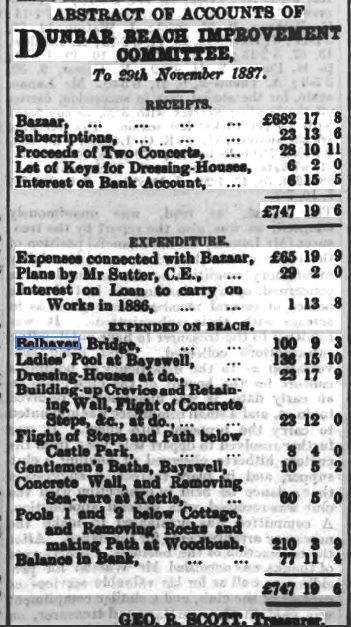This month’s entry focuses on Belhaven Bridge aka The Bridge to Nowhere. In response to a query to the Society from Canada, Robert Blair did some initial digging and Jim Herring followed this up with a more detailed examination of the index to The Haddingtonshire Courier from the 1870s. There were two small references to “a bridge” at Belhaven Sands in the 1870s, one indicating that funding was needed to build a proper bridge as the present “structure” – more a crossing than a bridge apparently – had been destroyed by high tides. So we get to the 1880s.

The extract above from May 1882 appears to be promising and an indication that the bridge might be built in the near future. Alas not so and there are no more index entries until 1885. It should be noted here that a researcher only has the index entries to guide her/him and this means relying on the accuracy of the indexing i.e. there could have been more discussion of the bridge at this time and it could have been reported in The Courier but the indexer may have missed it.

Although the extract above does not mention Belhaven Bridge, it is interesting today, in that it refers to the sand disappearing from the East beach and that the sand may have gone from the beach before the new Victoria Harbour was built in 1842. Plus ça change……….

So we get to February 1886 and there is mention of “a new bridge at Belhaven” being included in the costs. The council proposed to hold “a bazaar” – what we would now call a sale of work maybe – to raise money for the project as a whole.

So we now reach our desired destination – a date for the bridge being built. As the above extract shows, £100, 9s 3d was spent on “erecting the bridge over Belhaven Burn”. That was as far as Jim Herring got in his searches of The Courier indexes, but the John Gray Centre in Haddington stepped in to help.

The above accounts, provided by the John Gray Centre in Haddington, show in detail how the money for the whole beach improvement project was spent and we can see that the bazaar had raised over £682. This was a huge amount of money as the average weekly wage in the UK was less than £1 per week, so it must have been an enormous bazaar.
You must be logged in to post a comment.